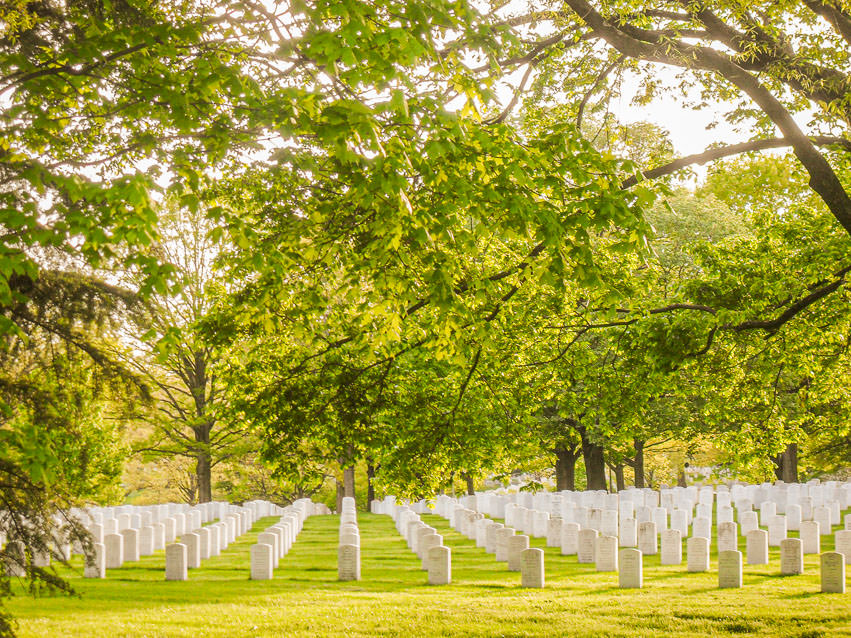
Arlington National Cemetery & Iwo Jima Memorial
I recently visited two famous landmarks close to Washington DC: the Arlington National Cemetery and the Iwo Jima Memorial. Learn more about these historic sites!
***
Disclaimer: please note that this post includes some affiliate links. This means that, at no additional cost for you, I earn a commission if you make a purchase. In case you have any question about the companies advertised here or my status as an affiliate, please do not hesitate to contact me.
***
When exploring the nearby nation´s capital and the broader country, you´re welcome to use this USA travel guidebook, as well as this other guide about Washington DC, both by Lonely Planet, to plan your stay and make the most out of it. I hope you’ll find them helpful!
The Arlington National Cemetery
Basic facts
Most probably, you’ll have heard of Arlington National Cemetery, the USA‘s most hallowed ground. It is the country’s largest military cemetery and serves as the final resting place for more than 400,000 military veterans and their immediate family from the fronts of Iraq and Afghanistan, as well as World Wars I and II, the Korean conflict, Vietnam, the Cold War and America’s Civil War.
The cemetery conducts between 27 and 30 funerals every weekday. The site is open to the public 365 days a year with free admission for those who wish to tour the site and pay their respects.
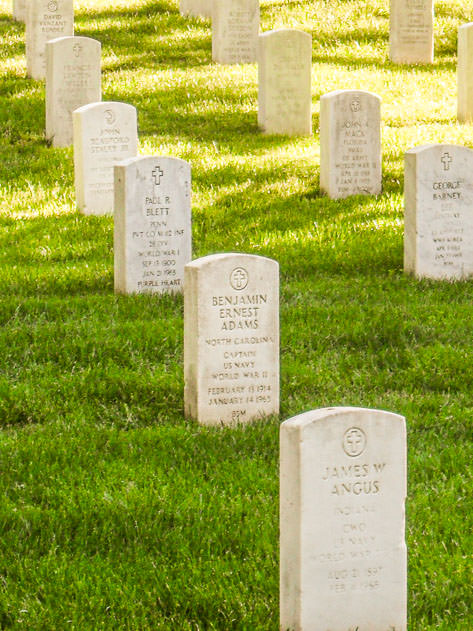
History
The national cemetery was established during the Civil War on the grounds of Arlington House, which had been the estate of Confederate general Robert E. Lee’s wife Mary Anna Custis Lee (a great-granddaughter of Martha Washington). The Cemetery, along with Arlington House, Memorial Drive, the Hemicycle, and the Arlington Memorial Bridge, form the Arlington National Cemetery Historic District, listed on the National Register of Historic Places in April 2014.
The national cemetery was established during the Civil War.
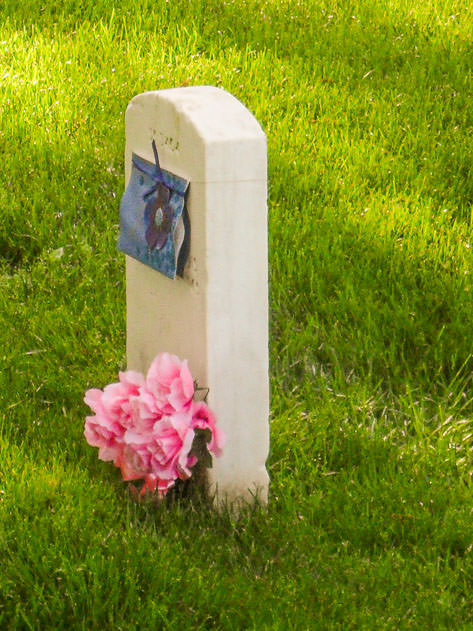
Location & how to get there
- 🚍 By bus: Metrobus routes stop at the Arlington National Cemetery, including the George Washington Parkway.
- 🚗 By car: you can drive to Arlington Cemetery, which is accessible by several major roadways.
- 👣 By foot: alternatively, you can walk by crossing the Memorial Bridge from Washington DC to Virginia.
- 🚇 By metro: this is the easiest way to get to Arlington National Cemetery in Virginia. Take the Blue Line and get off at the Arlington Cemetery.
Once you’ve arrived, start at the Welcome Center, which offers an overview of the site. Here you can also sign up for a tram tour that stops at various sites throughout the cemetery. This massive cemetery is built into a hill and requires extensive walking if you choose to skip the bus service.
Walking down the hill you will see the characteristic rows of white gravestones that populate the site as well as the Pentagon, which is located a short distance away.
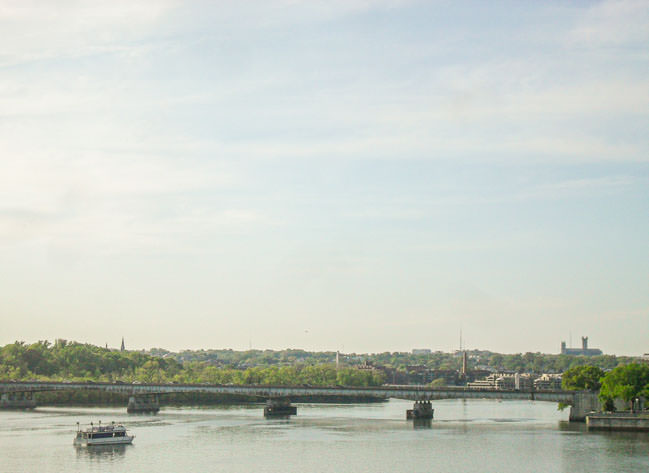
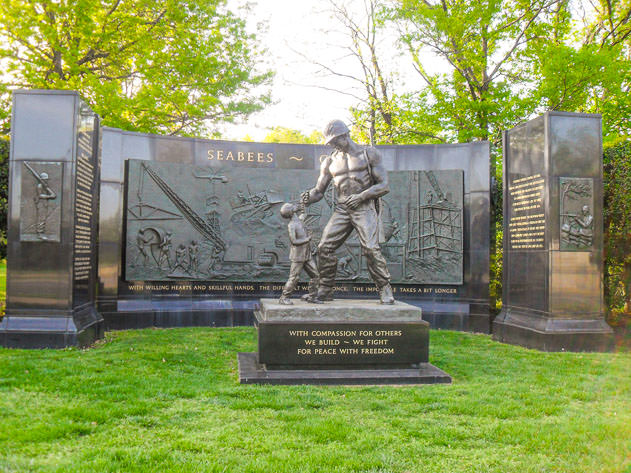
What to see in Arlington Cemetery
Tomb of the Unknown Soldier
Arlington National Cemetery is the home of several well-known historic sites, including the Tomb of the Unknown Soldier, which is a tribute to unidentified fallen soldiers who fought in World War I, World War II, Korea and Vietnam. The Tomb of the Unknown Soldier is a large white sarcophagus that is guarded 24 hours a day, 365 days a year by Tomb Guard sentinels from the elite 3rd U.S. Infantry Regiment.
This site is one of the most popular places in the cemetery. In addition, there is a small museum next to it housing various medals and gifts from foreign Defense Ministries to the United States.
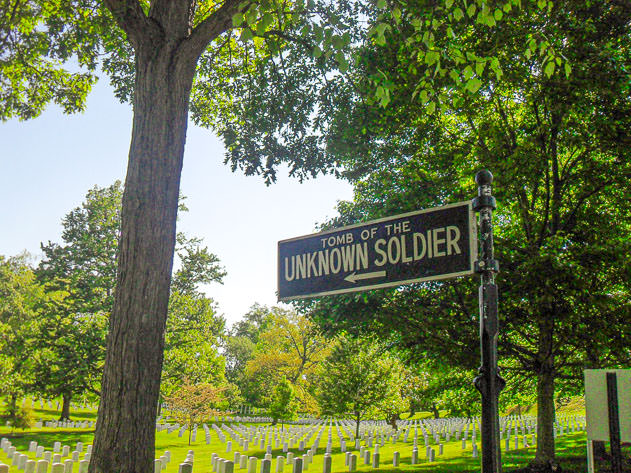

Changing of the Guard
The Changing of the Guard ritual—an elaborate, somber ceremony where a sentinel seamlessly takes over guard duty for the previous sentinel—happens every hour from October through March and every half hour from April through September.
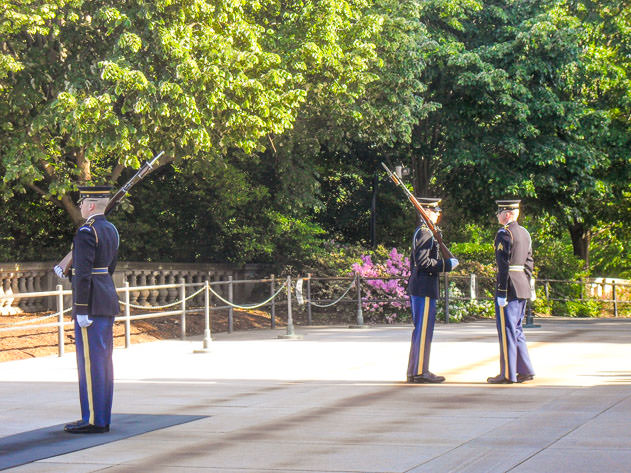
Arlington House
Arlington House, the former residence of Robert E. Lee, sits on a hill overlooking the cemetery. Either from there or from the Tomb of the Unknown Soldier, you will see the three most emblematic monuments of the city: the Lincoln Memorial, the Washington Monument and the Capitol. Originally built to be a living memorial to George Washington, in 1864 the grounds were taken over by the federal government to serve as a burial site for Civil War soldiers. Over the years, the house was also used as a plantation estate and home to 63 slaves, a military headquarters, a community for emancipated slaves and a national cemetery. The preserved historic home is open for public tours daily.
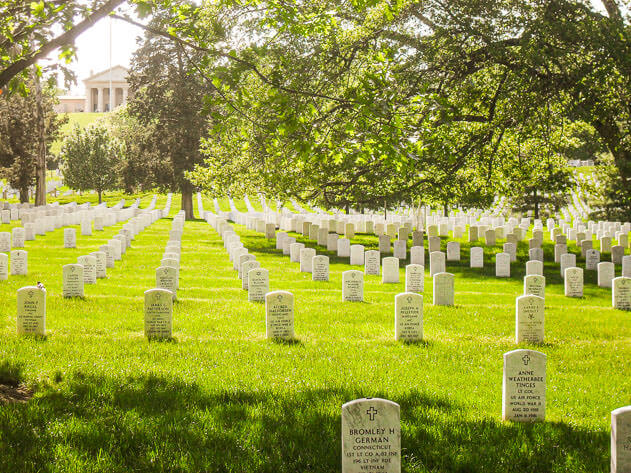
Notable graves
The gravesite of President John F. Kennedy is also on view at Arlington National Cemetery. At his funeral on Nov. 25, 1963, Jacqueline and Robert Kennedy lit an eternal flame that remains alight today. Two of Kennedy’s children and Jacqueline Bouvier Kennedy Onassis are also buried alongside the president.
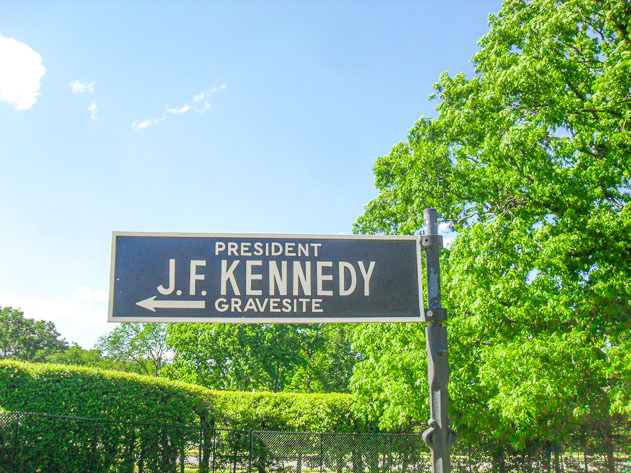
In addition to the Kennedy family, President William Howard Taft, Senator Robert F. Kennedy, the architect who designed the basic plan for Washington DC Pierre l’Enfant, world champion boxer Joe Louis or the seven Space Shuttle Challenger astronauts are also buried at Arlington National Cemetery.
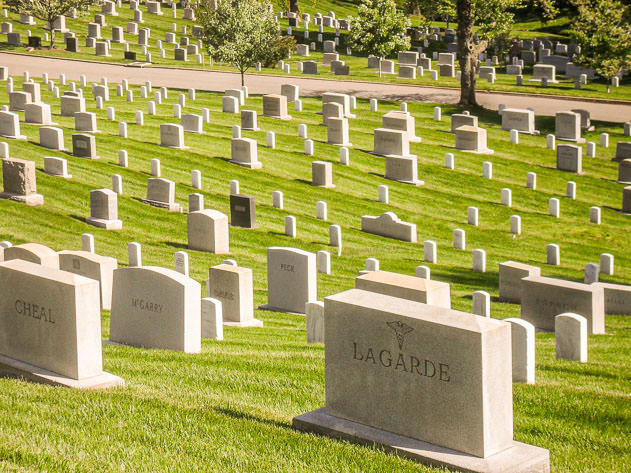
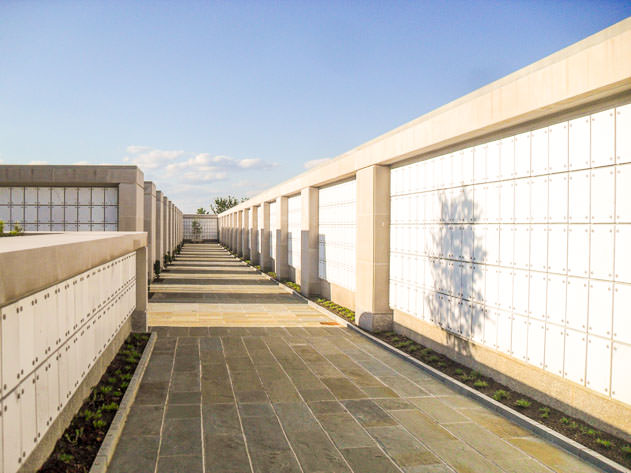
On Memorial Day and Veterans Day, thousands of visitors attend remembrance services in the Memorial Amphitheater. These special services are often attended by the President or Vice President of the United States.

Do you like my content? Subscribe to my newsletter to stay tuned.
The Iwo Jima Memorial
The Netherlands Carillon
Walking from Arlington National Cemetery up to the US Marine Corps War Memorial (also known as the Iwo Jima Memorial), you will stumble upon the Netherlands Carillon.
This monument symbolizes the gratitude of the Dutch people for American aid received during and after World War II. It consists of a tower housing 50 bells.

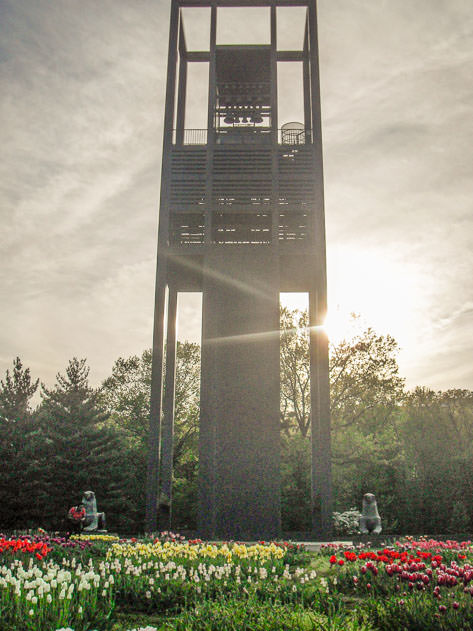
United States Marine Corps War Memorial
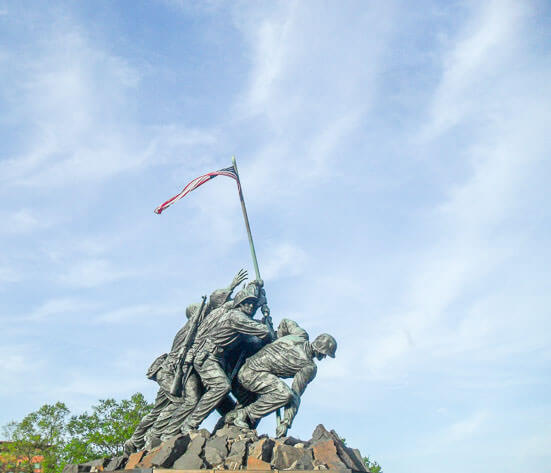
The United States Marine Corps War Memorial represents the nation’s gratitude to Marines and those who have fought beside them. While the statue depicts one of the most famous incidents of World War II, the memorial is dedicated to all Marines who have given their lives in defense of the United States since 1775.
Based on an iconic image of the second flag-raising on the island of Iwo Jima during World War II, the US Marine Corps War Memorial is dedicated to “the Marine dead of all wars and their comrades of other services who fell fighting beside them.”
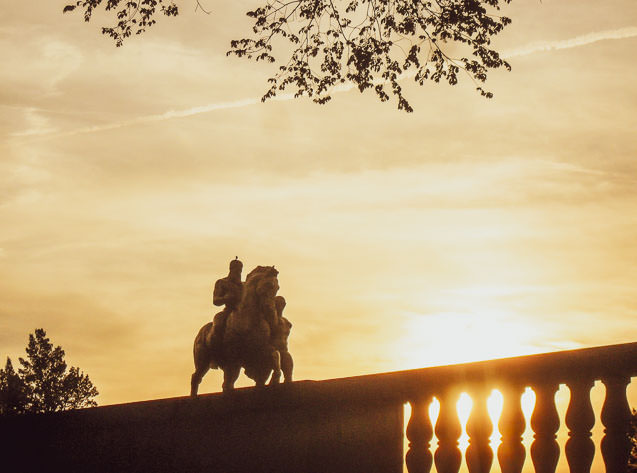
I hope you liked this post about the Arlington National Cemetery and the Iwo Jima Memorial. Feel free to leave me a comment below!
***
✈️ Curious to know where I’ll be traveling next? ✈️
Stay tuned by following me on social media (Facebook, Instagram, X) and subscribe to my newsletter for regular updates!
In the meantime, safe travels around the world!
***
| GET READY FOR YOUR NEXT TRIP! |
|---|
| Browse my travel resources page to plan your upcoming trip. |
| Feeling adventurous? Book any outdoor activities worldwide with Manawa! |
| Get medical or health insurance via SafetyWing for extra peace of mind. |
| Looking for sports equipment? Feel free to browse my Decathlon profile for inspiration. |
| Use the comprehensive and helpful Anaya Touring or Lonely Planet travel guidebooks to plan your trip. |
| Book memorable activities and tours around the world with Get Your Guide. |


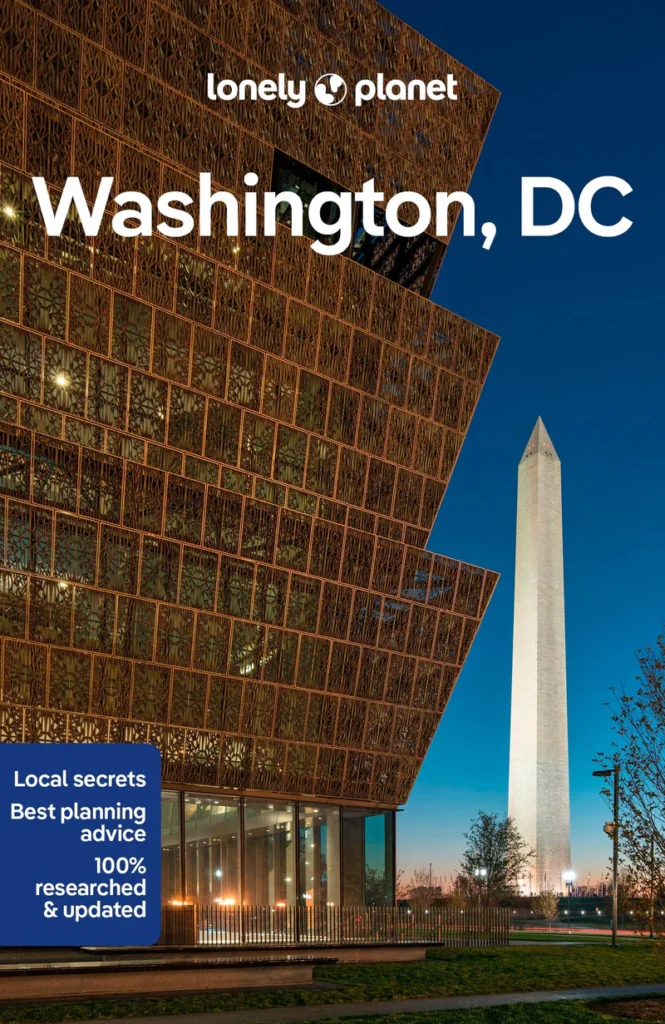
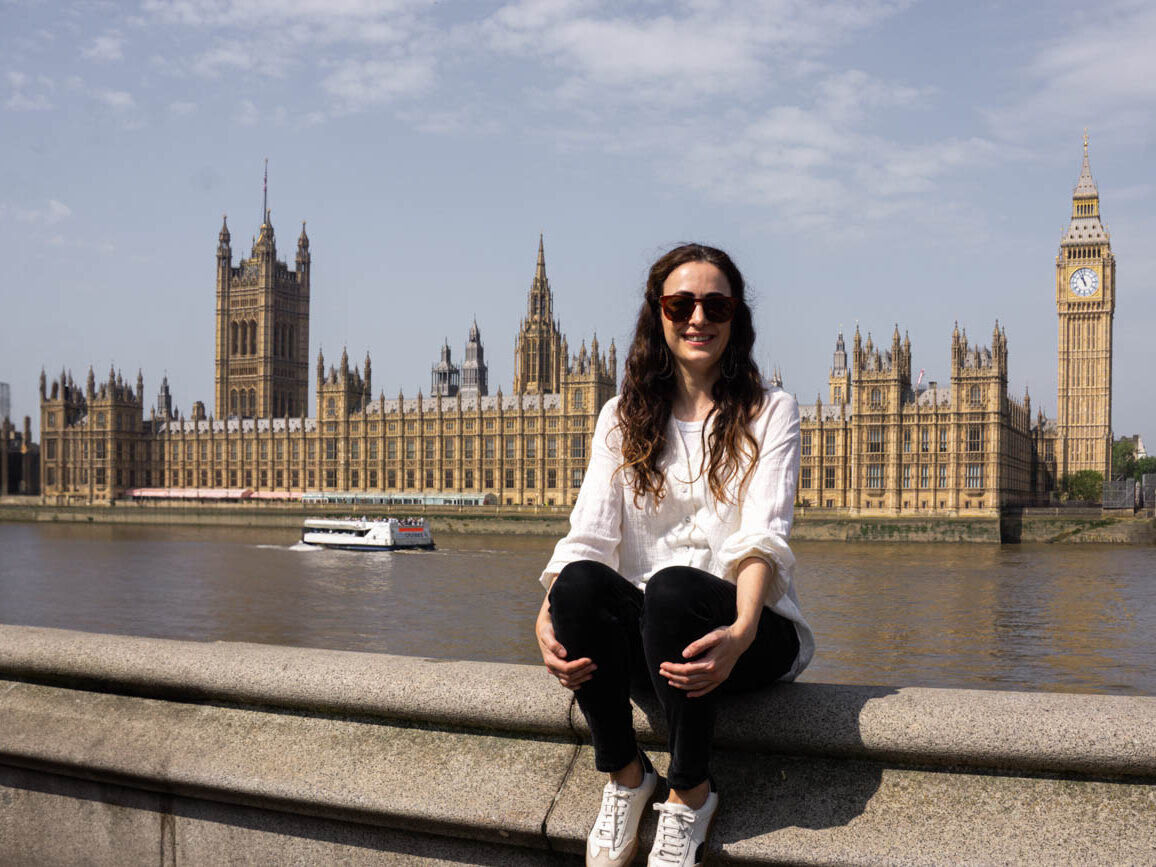
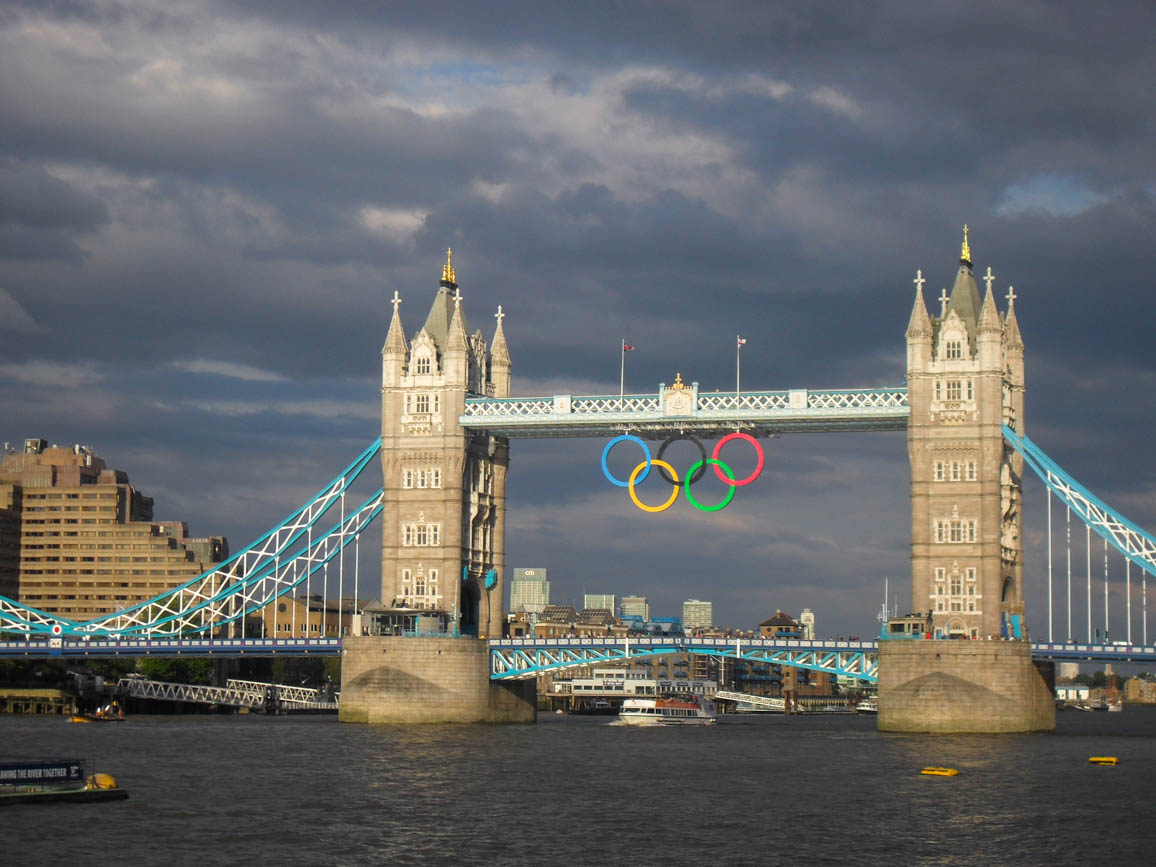
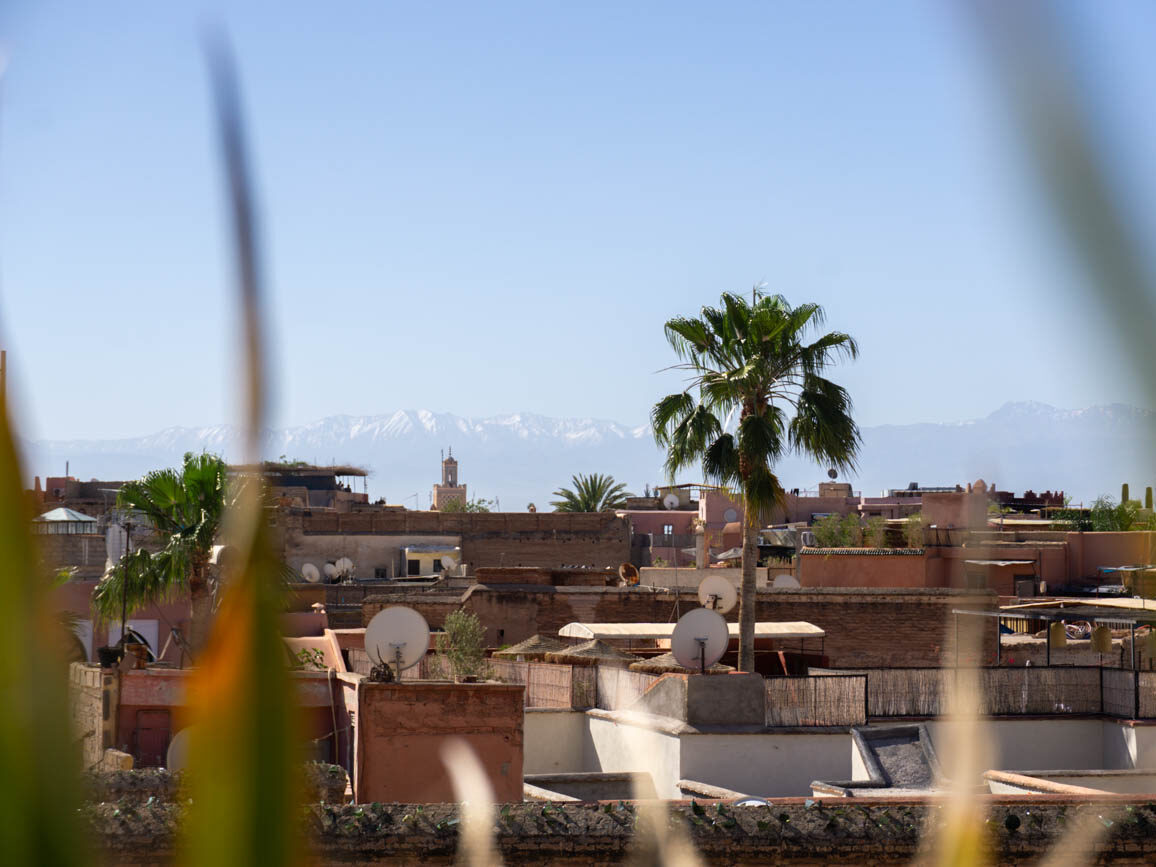
Karen
Im not clear if we can take the tram around Arlington, get off for whatever length of time, then get back on another tram (?) Should I book a tour ahead of time? PLEASE reply back ASAP via email. Thank you
Mariela
Dear Karen, many thanks for your question. From what I checked online (https://www.arlingtoncemetery.mil/Visit/Tours-and-Groups), the tram / tour bus service is hop on/hop off and makes five stops. The tram departs every 20 minutes, from 8:30 a.m. to 4 p.m. daily. You may buy your tickets here (https://www.arlingtontours.com/tickets). It´s probably best to book it ahead of time if you already know the exact dates of your trip. Have a great time visiting Arlington National Cemetery and happy to hear how it goes!